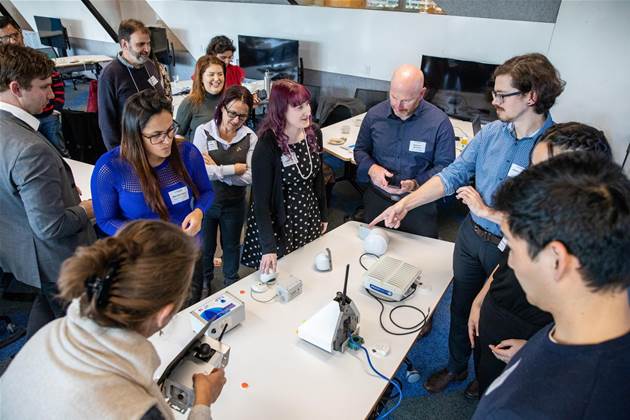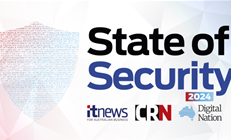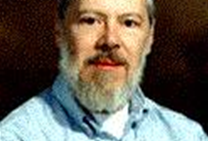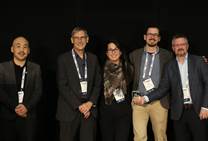When the NSW government, universities, and businesses launched the OPENAIR air quality monitoring network in June, it was also the next step in a long journey for former telecommunications researcher Professor Ben Eggleton.

Co-director of the NSW NSW Smart Sensing Network with Professor Julien Epps, Professor Eggleton told iTnews OPENAIR (Operational Network of Air Quality Impact Resources) was initiated some years ago by Matthew Raleigh, director of climate and atmospheric science from the Department of Planning and Environment.
“I guess the nutshell is that the universities within the network have come together to propose this consortium that is working with the department and councils and the state government to coordinate a kind of whole-of-NSW initiative on air quality monitoring, particularly working with councils and citizen science, to provide a more robust platform for citizens, residents to have at the end of the day data that informs their decision making.”
While air quality sensors have been deployed for some time, the OPENAIR aim is to make the data more granular, more accurate, and more available, he said.
That means getting the existing statewide network of sensors connected together and delivering data to users, and over time, deploying more sensors.
Professor Eggleton told iTnews there’s more at stake than just the ICT infrastructure – co-design is also vital so that the information is presented in the right way for different audiences.
“Transparency is gold. And the most important thing is how do you fuse the data and then provide it back to consumers, to residents, to stakeholders, to policymakers in a way that allows for meaning to be extracted," he said.
“We want to make sure this is data that's useful to all sorts of consumers and residents and industry government policymakers. And that informs good decisions.
“So there's quite a suite of things that has to go on here. It's not just that you need the data infrastructure, it's that you need to have, for example, researched your stakeholders, your audience so that you're so that you're right. So that you understand what constitutes usable data to them.
“We will use traditional co design principles to consult those stakeholders.”
“When you have these conversations, you make sure that all of the stakeholders are in the room. And they are consulted. And as you shape your strategies, you really ensure that … they contributed to it, and they have some ownership of it.”
That's an “overarching principle” of the NSW smart city network,” Professor Eggleton said.
Photonics in the background
A statewide sensor network seems a long way from Professor Eggleton’s years of research into ultra high-speed communications, but as he explained to iTnews, the progression happened precisely because of his photonics work.
“As much as photonics is a very powerful platform for transporting data, vast amounts of data … lasers are also incredibly good sensors,” he said.
“It's a very simple kind of 'Eureka moment' where you say, actually, laser light allows you to characterise the spectroscopy of molecules to actually look at the molecular fingerprint of a material and therefore probe the environment and detect contamination in the air that we breathe.”
With that insight, his group at Sydney University “kind of invented ourselves.”
One of the group’s early pivots, starting around 2015, was to help the NSW chief scientist prepare a report into air pollution in the Hunter Valley associated with the rail corridor.
Diving into it, he said, the Sydney Nano Institute researchers realised that air pollution is “quite a complicated issue”.
One way to analyse the composition of air was to use laser spectroscopy – but there are other approaches.
“You can also use a laser with a different principle – you actually build a little device where the light literally scatters off the individual coal particles.
“It was through that initial project that I started to pivot the entire group to a sensing focus”.
Since then, he said, the Sydney Nano Institute has broadened its attention into other applications, such as working with Sydney Water to detect pipe failures.
A common urban approach is to send miniaturised microphones through pipes, and training models to identify the sound signature of a leaking pipe.
That, however, might not be feasible in remote locations – so Professor Eggleton offered a quantum gravity sensor as an alternative.
“Without going into too much detail, it’s an interferometer … [it] uses atoms that are basically generated in this ion trap.”
The group of atoms is so small it is sensitive to local gravity fields. Given transport (a drone or a carriage following a track), “you can measure the gravity field that gives you an indication of how dense the ground is ten metres down. And that’s an indication of a leaky pipe.”
National security is another emerging application for sensors, Professor Eggleton said.
“Australia has national security concerns, and we're a big country, we've got a lot of ocean, a lot of land, a lot of coast, we're worried about things from the north coming into our sovereign territory, [so] we need to be able to protect those and not only detect them and classify them and track them very quickly.”
To do that “at scale, at distance, with high resolution and accuracy” is easier if the country can deploy autonomous sensors to gather the signatures of objects: “sensors that detect, and classify, and track objects – small objects, fast objects, big objects”.
That could be quantum sensors, optical sensors, infrared sensors, RF sensors and so on.
The more sensors are available, Professor Eggleton said, the better.
“If you're looking at an aeroplane, in the sky, actually, you need to be able to see it, you need to also be able to hear it … And what if you could also see it in the infrared spectrum? And that would give you a thermal signature? Or what if you were able to also look for its electromagnetic radio signature?
“When you combine those different signatures that you have a more complete and accurate picture.”
The best reader of complex, multi-mode signatures is a human, he said – but deciding what to raise for human attention can be assisted by machines.
“The idea of combining different sensors and AI … is to bring meaning out of that data,” he explained.
“So what we want to be able to say is that we've detected a threat in the north of Queensland, and we've characterised it as a threat.”
The system, he said, should be able to say: “These are the circumstances we recommend you take the following action, but here's all the data we have, so that you can make the right decision.”




















